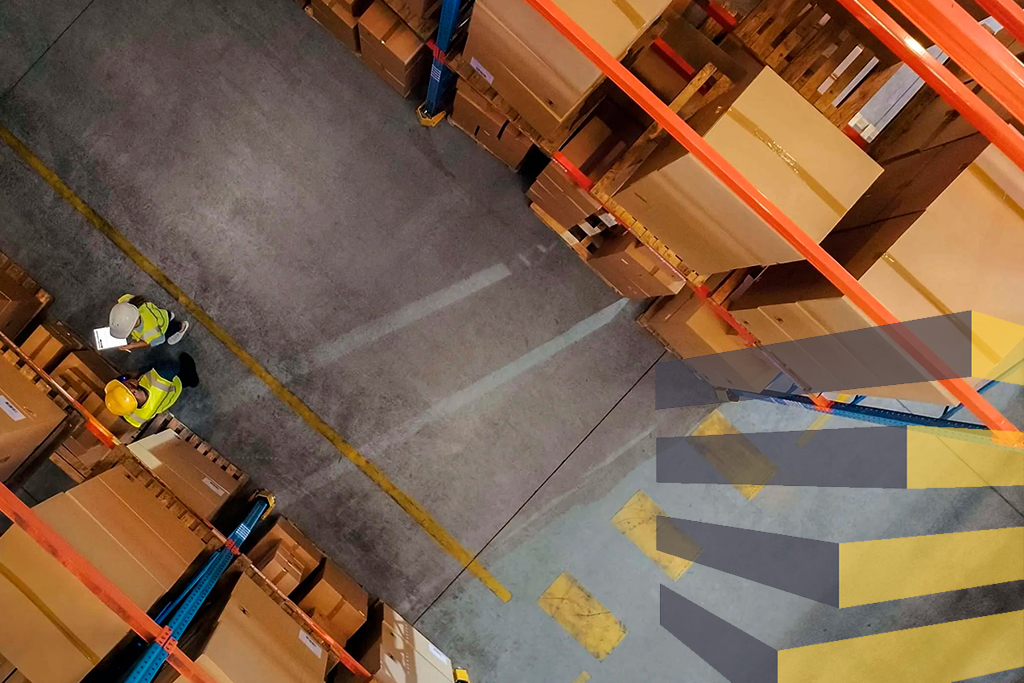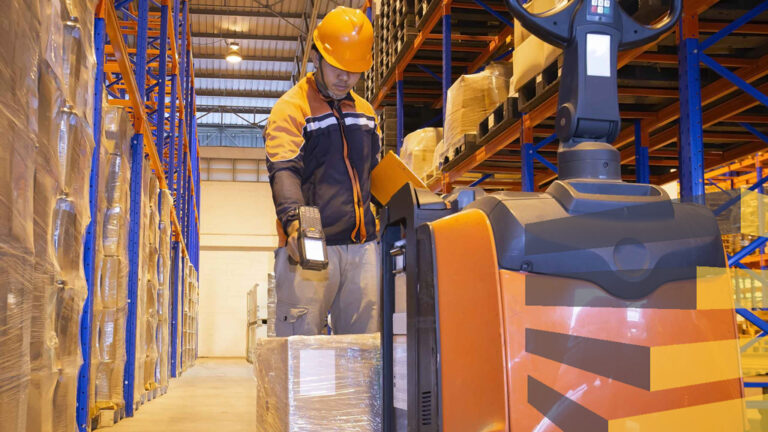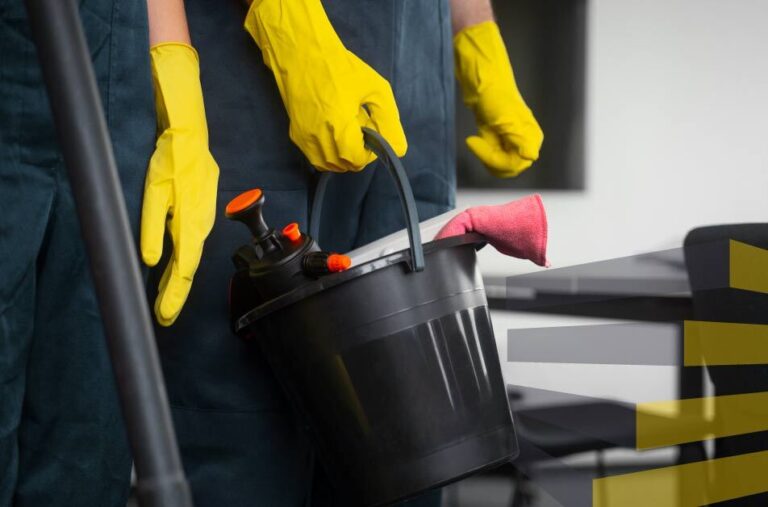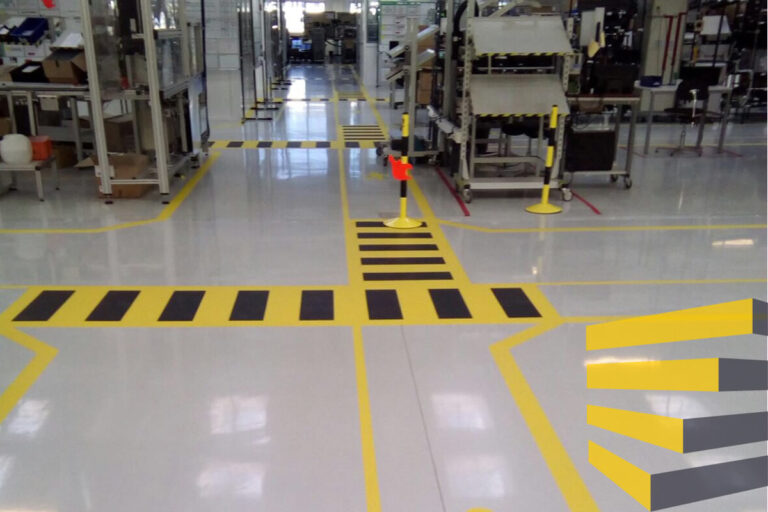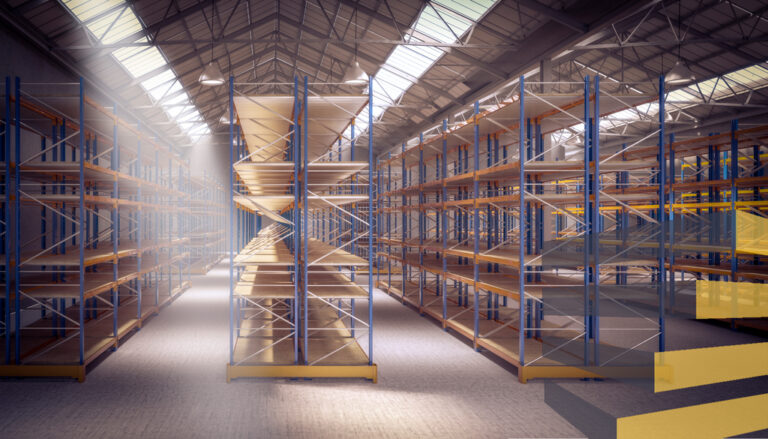Table of Contents
Warehouse safety floor markings are a critical piece of infrastructure in warehouses and distribution centers, helping to protect people operating in the space, as well as guiding them around.
On top of minimizing risk by informing people of hazards and creating pedestrian-only corridors, warehouse safety floor markings also boost efficiency by controlling the flow of goods and vehicles.
It is worth keeping in mind that floor demarcation is only one piece of the safety puzzle when it comes to setting up a logistics facility, with the likes of warehouse barriers and warehouse safety signage also key components.
Which is why, in any facility where heavy goods, vehicles and people will be moving around, the warehouse layout design should integrate all of those elements, along with the likes of racking.
Contact us, if you need warehouse safety floor marking in Brazil, Mexico, or the United States.
Warehouse safety floor markings: two common options
The most common type of warehouse safety floor markings is adhesive tape designed to be placed on the floor. It’s usually made of highly resistant materials, such as vinyl. There are many sorts of tapes, such as glow-in-the-dark, reflective, freezer, or hazard tapes. Each has a particular use and place.
One great benefit of using floor marking tapes is the quick speed of application, as they can be installed fast and immediately used. They are cost-effective and can be either removed or reapplied with relative ease. However, tape is prone to being damaged, especially in high-traffic areas.
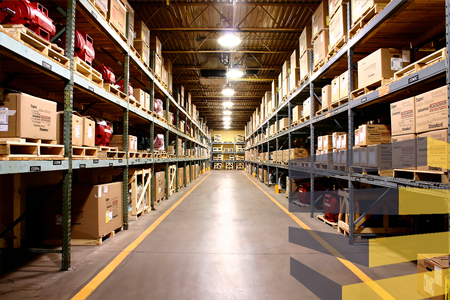
The most common alternative to tape is long-lasting paint. It involves the application of specialized coatings or markings on the warehouse floor, usually with epoxy paint. In some cases, you can also apply polyurethane coatings for additional resistance to chemicals, or thermoplastic markings for even greater durability in high-traffic areas.
Using paint for warehouse safety floor markings offers a customizable finish and a generally longer lifespan than tape. However, buying proper paint may require higher initial investments. Also, the floor must be treated before any application and requires extra time for the paint to dry afterward, so installation may take longer.
Regulations for warehouse floor markings
While regulations around warehouse safety floor markings may vary from country to country, they will generally be very similar anywhere you go. In the United States, such regulations fall under the purview of the Occupational Safety and Health Administration (OSHA), whose regulations are often considered a benchmark internationally.
Among the regulations around warehouse safety floor markings established by OSHA are the following:
Use of mechanical equipment: the OSHA standard 1910.176(a) requires that aisles and passageways shall be kept clear and in good repair, with no obstruction across or within aisles that could create a hazard. This includes properly marking the floor to facilitate traffic and avoid obstacles.

Width requirements for aisles: the OSHA Standard 1910.22(b) demands that aisle space be clearly defined by floor lines. These lines may be composed of dots, squares, strips, or continuous. The recommended width of aisle markings varies from two inches to six inches.
Exit route codes and planning: emergency exits are a permanent area needed in the workplace. Warehouse safety floor markings must comply with different OSHA standards, such as 1910.34, 1910.36, and 1910.37, that mandate adequate, visible, and appropriate lighting and marking.
Floor marking color standards
Although various OSHA rules stipulate aspects for warehouse safety floor markings in aisles, passageways, and corridors, there are no official government-mandated norms within the industry suggesting specific color schemes. However, you can follow OSHA standards to create a uniform and efficient visual system.
Since there are many options for tape and paint, it’s important to consider which colors are most appropriate for your facility. Keep the number of colors limited, clear and integrated into your wider warehouse safety signage so that all staff in your warehouse can learn and remember their purposes easily.
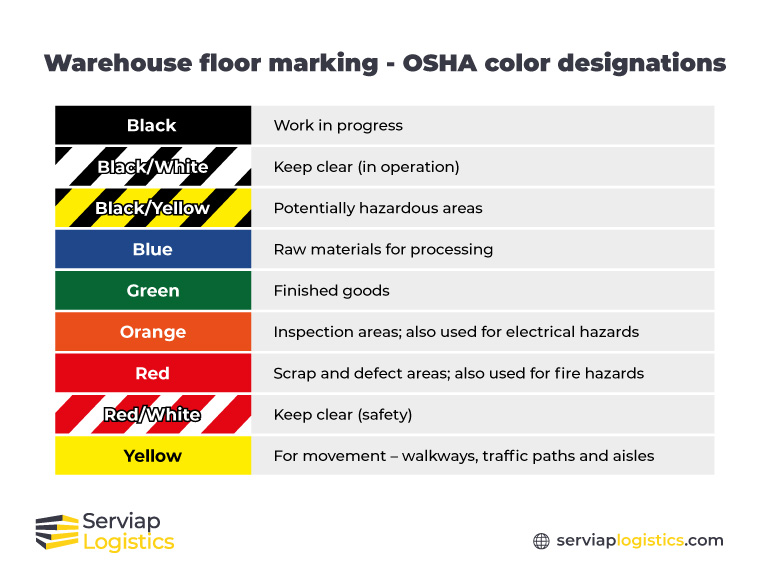
OSHA certification suggests that black be used for work in progress, while black and white should mean keeping a space clean, and black and yellow signals potentially hazardous areas. Blue markings can serve for raw materials, and green ones correspond to finished products.
Furthermore, you can use orange for inspection areas, and red for the retention of defective materials or fire hazards. White indicates where containers or other items are located. Finally, yellow is the most common color you’ll see in many warehouses as it is used for the flow of materials, such as aisles, corridors, and traffic spaces.
4 key considerations for warehouse safety floor markings
A well-designed warehouse safety floor markings system will create an environment that enhances productivity while making sure that safety is paramount. It means that everyone knows where to go and not go and what goes where.
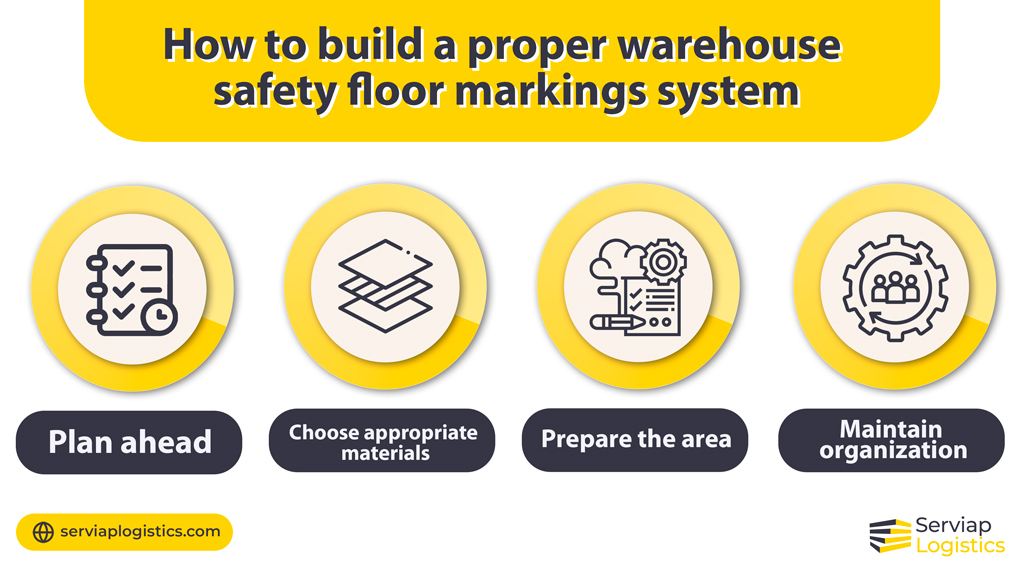
1) Plan ahead and assess the risks
Before implementing floor marks, it’s essential to thoroughly plan the layout. Start by analyzing the workflow, track routes and the typical movement patterns of employees, equipment, and goods. This includes a risk assessment to identify high-traffic areas, potential hazards, and any specific safety requirements necessary for certain goods.
2) Choose the appropriate materials
Consider factors such as durability, visibility, and ease of maintenance. Remember that permanent markings are ideal for areas with stable layouts and well-defined processes, while temporary options, like removable floor tape or strips, are suited for warehouses with dynamic operations that require periodic adjustments.
3) Prepare for application and train employees
Before applying the warehouse safety floor markings, prepare the environment by properly cleaning surfaces and keeping them free of any debris that may affect the adhesion of the markings. Then carefully follow the instructions for application. Finally, conclude the process with training sessions for all employees on the new system.
4) Maintain organization and inspection
Once you have implemented an adequate design for warehouse safety floor markings, it’s important to take care of it going forward. You can apply different organization methodologies, such as 5S floor marking, to help arrange the different zones within the warehouse and maintain best safety practice.
Serviap Logistics can assist with warehouse safety floor markings
At Serviap Logistics, we install warehouse safety floor markings in Brazil, Mexico, and the United States, in full compliance with all local regulations.
Our portfolio of warehouse setup services also includes supply and installation of collision protectors, racking, and signage. We also supply warehouse labels and offer industrial cleaning services.
Our ability to hit tight deadlines without sacrificing quality or safety has seen us become the trusted partner of some of the biggest and best-known companies in the world, covering industries such as agriculture, automotive, e-commerce, and wholesale.
Contact us to find out more about how we can assist you.


